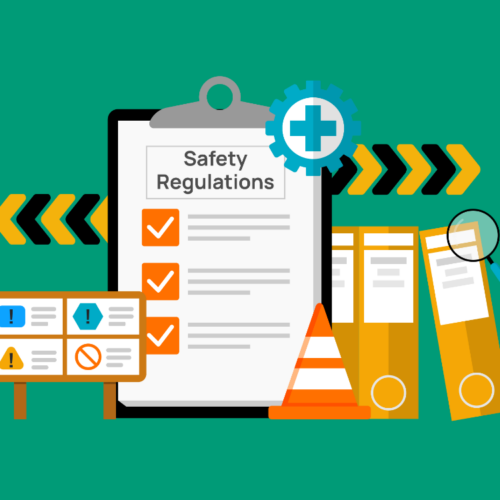
At Staff Management | SMX, we consider the safety of our workers our No. 1 priority and are always striving to make improvements in this area. One way we do this is to track important safety metrics at each site using a safety scorecard. This scorecard gives us a quick snapshot of our safety performance in comparison to our goals and is an easy way to identify opportunities for improvement.
If you’re looking to improve workplace safety, or the way you track it, try implementing a safety scorecard within your organization. To get you started, we created a generic template that includes common safety performance metrics (defined below) that can be easily tailored to fit your specific safety goals. Download the template, plug in your numbers and let the formulas do the work!
Formulas
You’ll notice that the formulas use a standard base rate of 200,000 labor hours. The number 200,000 is used because it equates to 100 employees who work 40 hours per week 50 weeks per year. It allows you to calculate your rate and determine a percentage per 100 full-time employees.
- Accidents Every 10,000 Hours: Number of accidents per every 10,000 hours.
Formula: Accidents / (Hours worked / 10,000)
- Total Recordable Incidence Rate (TRIR or TRI rate): Number of incidents per 100 full-time employees. An incident is typically a nonfatal injury or work-related illness. Calculations will fluctuate when companies flex their labor and smaller companies are likely to face higher TRI rates because of the small amount of hours worked.
Formula: Recordable cases x 200,000 / Hours worked
- Lost Workday Case Incidence Rate (LWIR): Number of days lost due to nonfatal injuries and/or work-related illnesses per 100 full-time employees. If a worker is able to report their workplace but must be given work other than their normal duties because of an injury, this is considered a restricted workday rather than a lost workday.
Formula: Lost workday cases x 200,000 / Hours worked
- Lost Workday Severity Rate: Average number of workdays lost per recordable incident.
Formula: Lost workdays x 200,000 / Hours worked
- OSHA Incident Rate or DART (Days Away, Restricted or Transferred) rate: Whereas LWIR is specific to lost workdays, DART describes the number of injuries and/or illnesses per 100 full-time employees that resulted in lost workdays, restricted days or job transfers within the company.
Formula: Number of DART incidents x 200,000 / Hours worked
- OSHA Severity Rate (OSHA SR): Number of OSHA recordable injuries and illnesses a company will experience per 100 full-time employees.
Formula: (Number of lost workdays + Restricted workdays) x 200,000 / Hours worked
Definitions
- On-Time Reporting: Number of incidents entered into your risk management system on time. You’ll have to define what is considered on time based on your company’s standards. This scorecard uses a standard of 24 hours.
- Light Duty: Similarly to a restricted workday, this is the number of days an employee was given work other than their normal duties as a result of a work-related injury or illness.
- Unsafe Act: Number of recorded acts that are considered unsafe because they threaten the health and safety of workers. For example, using tools not for their intended purpose or operating machinery against established regulations are unsafe acts.



